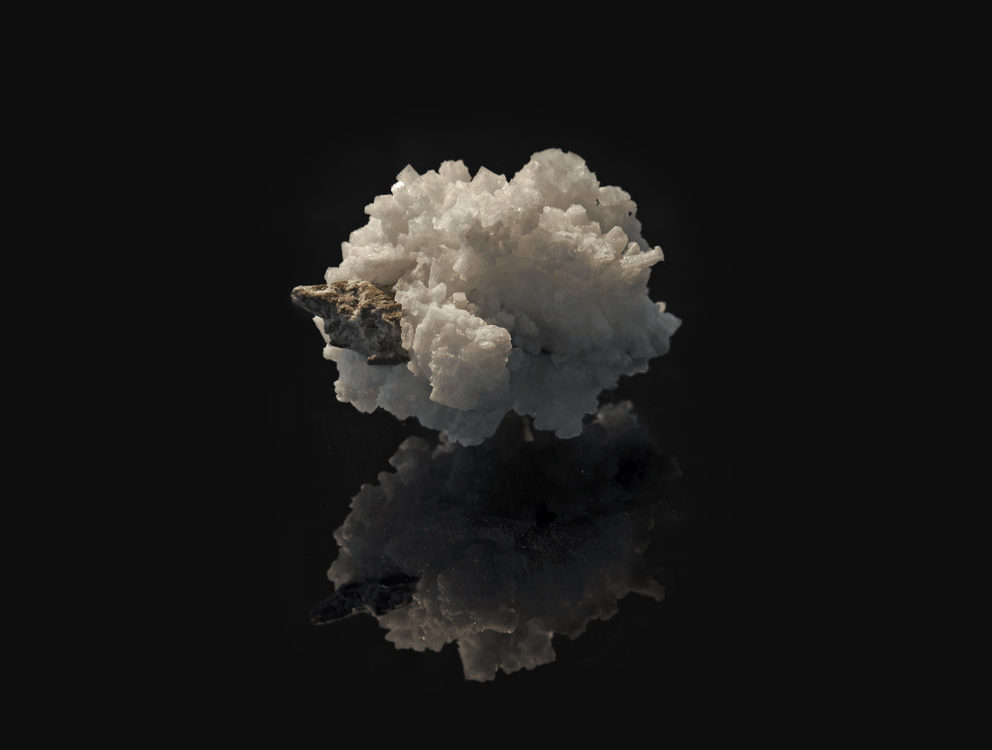The Writing on the Wall
by Devon Van Houten Maldonado

Óscar Santillán. Baneque. 2016. Crystalized salt water. Collection of Silvia Fiorucci, Monte Carlo. Courtesy MUAC, Mexico City.
There’s a park near my apartment in Mexico City’s Roma Sur neighborhood where a utopian vision of modernism — artificial ponds, an arboretum, colorful geometric sculptures — lies dilapidated and reclaimed by nature. The ponds are empty except for the occasional soccer game or stagnant puddle during monsoon season. The sculptures are marked with graffiti, and a plume of toxic smoke rises from homeless men burning trash. You don’t have to dig too deep for the park’s metaphorical significance: welcome to the megacity, and the ruins of modern idealism.
In Mexico, the artistic upheavals of modernism came with the 1910 uprising of the working class that unseated the dictatorship of Porfirio Díaz, and still today Mexican artists and art historians associate modernism with the political aims of the revolution. In the 20s, this modernist fantasy was painted into the national identity by the artists of the Mexican muralism movement. Murals by Diego Rivera, José Clemente Orozco, David Alfaro Siqueiros, and others depicted a mestizaje nation — a unified society of European and indigenous ancestry, founded on socialist ideals — and became the image that modern Mexico presented to the world. (In New York, MoMA’s second ever monographic exhibition was by Rivera, in 1931; only Matisse got a show earlier.) After World War II, the only movement to directly challenge the illustrative idealism of the muralists was the “Breakaway Generation,” whose rigid formalism combined modern abstraction with a progressive social project. The Breakaway artists never reached the same elevated status as the muralists in official national images, and in any case, the prosperous and bountiful Mexico that both movements so fervently believed in never came to fruition. Unlike the murals that were canonized into state propaganda and continue to be revered as one of Mexico City’s main cultural attractions, the Breakaway Generation’s public works have since been abandoned, graffitied, rusted over, and taken back by nature.